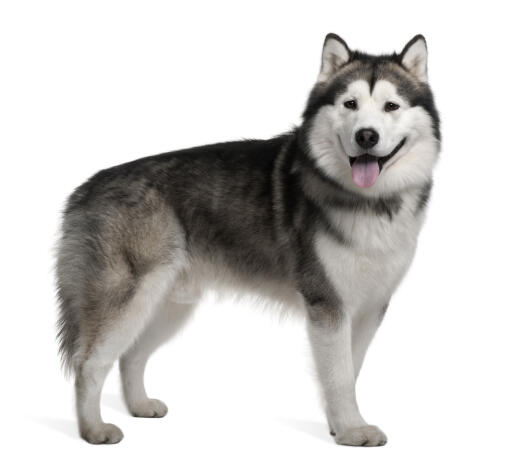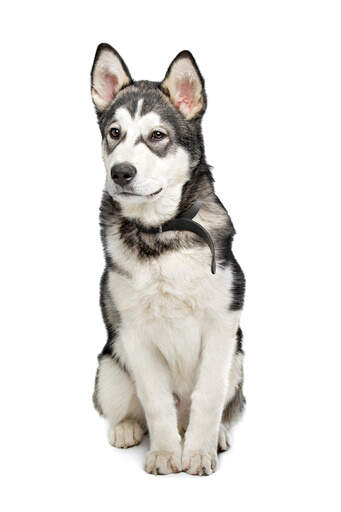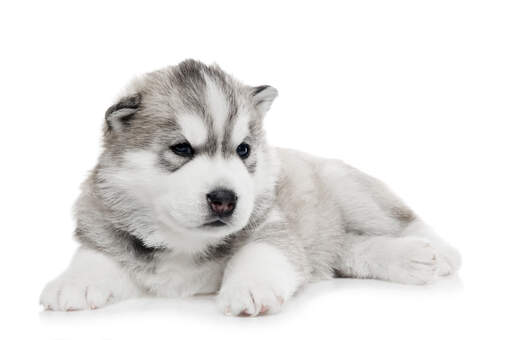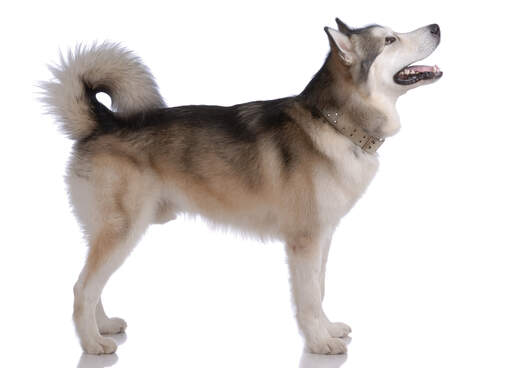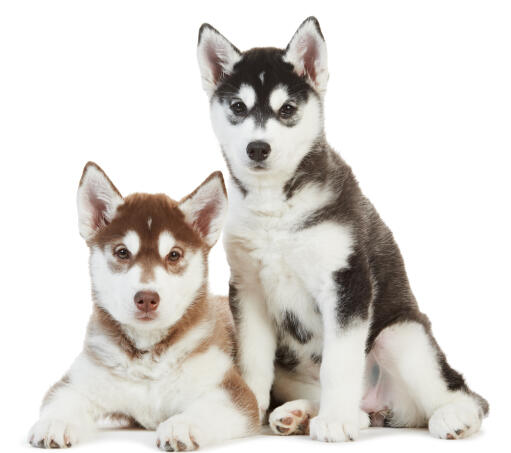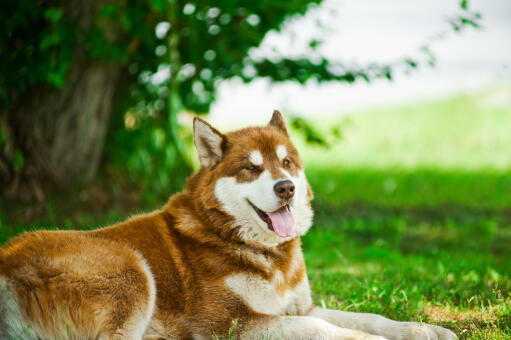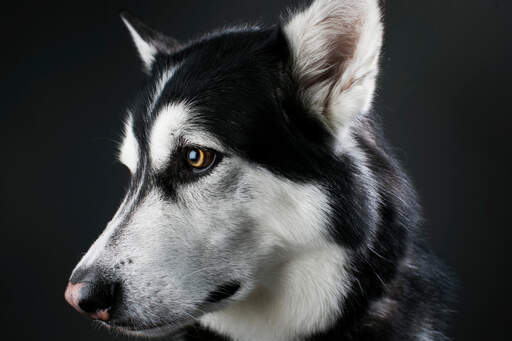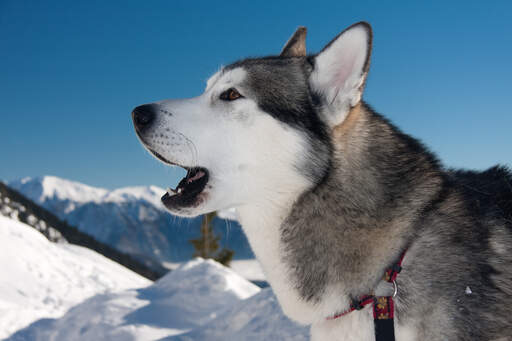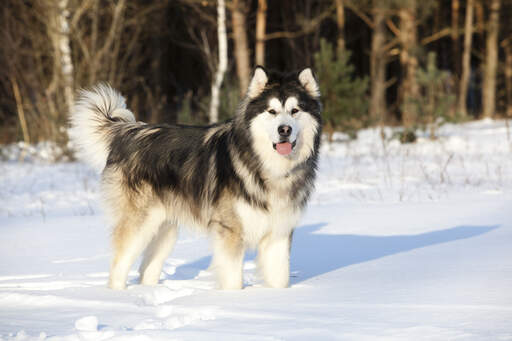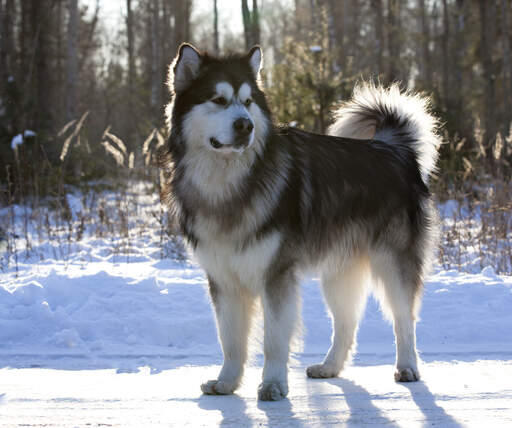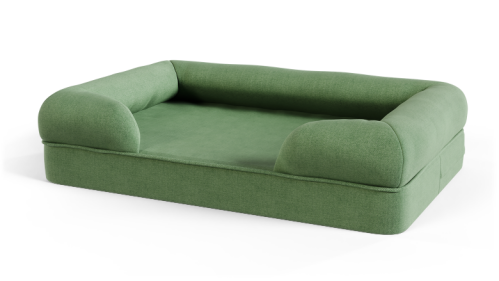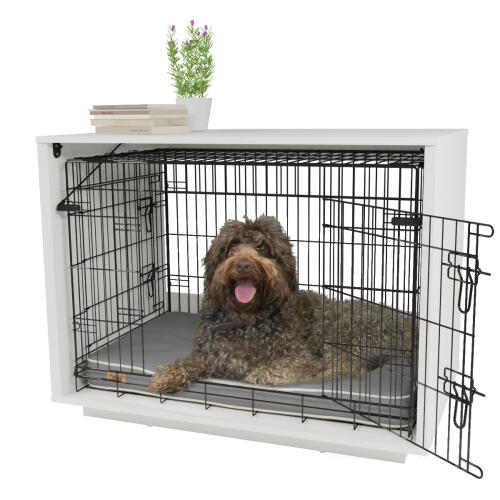Alaskan Malamute Dogs










Breed Rating (2 Reviews)
| Appearance | |
| Friendliness | |
| Hardiness | |
| Garden |
History
The Alaskan Malamute evolved from the Arctic regions and was first discovered living among native Inuits on Alaska's North coast. The exact origin is sadly unknown. The dogs were used by hunters to pull large prey such as seals and bears back to the village. They are large, strong dogs, well suited to colder climates as they have dense fur and large feet, which helps them to pull carts or sleds through the snow. They have immense stamina and highly tuned sense of smell. It is still used today to pull sleds in remote North American locations and in sled racing competitions all over the world.
Behaviour
Malamutes are strong, independent dogs that need firm training from an early age. They learn quickly, but have a strong will. Their sheer size can be a problem in an untrained dog, knocking over furniture and small children when excited. They are a powerful, fun loving breed, that loves people, but need exercise to lower their high energy level. They love to run and roam, but recall can be a problem; not because they don't understand, but because they don't want to come back. They are useless as a guard dog as they love all human contact and like nothing better than being made a fuss of. If not socialised, males can be aggressive towards other dogs. As they were bred to pull, lots of lead work is important to teach them not to pull. Being incredibly food motivated can help when training; they are notorious at stealing the contents of the kitchen bin. A dog that is bored will quickly become destructive, so they need plenty of exercise to wear them out. Due to their dense fur, they can overheat, so avoid walking them when it's too hot and make sure they have somewhere cool to escape the sun. Malamutes need brushing a few times per week, their coats do shed an awful lot. A generally healthy breed, but owners should be aware that Chronic Hip Dysplasia (CHD) and cataracts can be a problem for the breed.
Temperament
Not for the faint hearted the Alaskan Malamute has a very dominant temperament and can tend to be a one person dog. This means that the dog will need assertive training from its handler(s) starting in early puppyhood. Furthermore this means that they are unlikely to do well with other dogs and in some cases may show extreme aggression.
The dogs have incredible stamina and will need at least 2 hours of exercise everyday to avoid restlessness which may include howling and excessive destruction of anything they can get their paws on!
Health Problems
Health problems which may affect the Alaskan Malamute include canine hip dysplasia (CHD), elbow dysplasia, chondrodysplasia (a type of dwarfism) and day blindness (blind in bright light).
It is also important to note that due to the thick coat on these dogs they are not suitable to warmer climates and may suffer heatstroke if exercised on hot days.
Breed Details
- Status: Common
- Life Expectancy: 13 - 16 years
- Weight: 34 - 41 kg
- Rare: No
- Coat: Medium - Double
- Grooming Requirements: Everyday
- Town or Country: Country
- Minimum Home Size: Large House
- Minimum Garden Size: Large Garden
- Breed Type: Working Dog
- Size: Giant
- Energy Level: High
- Exercise Required: Over 2 hours
Alaskan Malamute Pictures
Latest Reviews For Alaskan Malamute (2 of 2)
Alaskan Malamutes - Julie,
This breed adores all humans! They’re independent and smart. Wonderful companions in the house!
Very friendly but a strong prey drive - Leeann,
My malamute is a friend to all humans, loves everyone but is no guard dog, that’s for sure. Intelligent breed and easy to train, including recall when off lead if trained young enough, apart from when they get a scent of wildlife. Grooming becomes a part of daily ritual but also helps with bonding. There is a lot of fluff all year round. Most important rule of owning a Malamute is that you must provide somewhere cool for your dog to sleep/rest all year round. They do not like central heating. Very soft and gentle in nature and are extremely loyal. Average daily walks are 5 miles split into 2, even at 10 years old.

